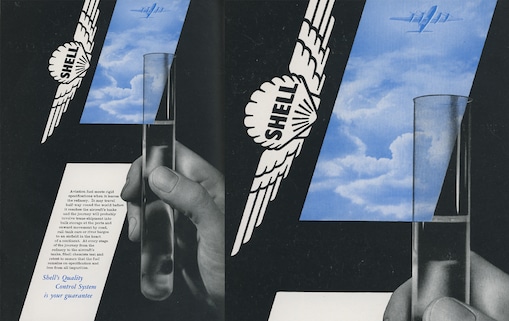Improved fuel quality assurance from well to wing

Aviation fuel enables aircraft to fly thousands of miles around the world. But the journey of that fuel from refinery to airport can be equally long and often far more complex. By the time fuel is pumped into an aircraft tank, it may have travelled thousands of miles by sea, have been through bulk storage at ports before trans-shipping by road, rail, or river barges.
As the aviation industry continued to grow throughout the 1950s, and the volume of fuel transported became higher, the potential for fuel contamination in transit increased, posing safety risks to aircraft, passengers and crew.
To answer this challenge Shell Aviation introduced a rigorous quality control system in 1957 to guarantee the quality of aviation fuel from refinery to the aircraft tanks.
Checks started at the refinery with a sample of all fuels shipped undergoing 20 different laboratory investigations, including distillation, water reaction, freezing and flash point testing before being released. Once the fuel arrived by tanker at a main installation, samples were taken to the nearest of Shell’s 82 control laboratories to clear the fuel for onward distribution to the airport. Whatever the journey, with the Shell Quality Control system, the same laboratory tests were repeated at each location to ensure it remained on-specification and free from impurities.
The final element before fuel was finally delivered to an aircraft saw it pass through a vital “check point”, a highly sensitive, micro-filter working in combination with a water separator. If the fuel passed all these tests it was cleared to fly.
Implementation of such a rigorous testing system ensured the integrity of aviation fuel and helped lay further foundations for the safe, efficient fuelling system that supports global aviation today.
Another innovation introduced in the same year as the Shell Quality Control system was the Shell Water detector, a simple device for sampling fuel to detect water contamination. It soon became the industry standard and is still the industry’s system of choice today, continuing to ensure the safety of aircraft, passengers and crew, over 60 years after its introduction. A second more recent example is Shell Jet Protection, an innovative and safer new fuel filtration system. Developed in partnership with FAUDI Aviation following safety concerns around fuel filtration equipment, Shell Jet Protection was rolled out across all Shell managed locations in 2020 and this solution is available to the entire industry.
Sources:
Shell Aviation News, 1957, p. 192. Shell Aviation News, 1963, p. 136.
Shell Aviation News, 1964, p. 91.
https://www.shell.com/business-customers/aviation/news-and-media-releases/news-and-media-2020/shell-introduces-first-industry-solution-to-meet-sap-free-refuelling-deadline.html
Shell Aviation News, 1957, number 224, p.20.
Shell website: https://www.shell.com/business-customers/aviation/aviation-fuel/shells-water-detector-tool.html.
Shell historical archives.

Decarbonising Aviation: Cleared for Take-off
Our new report, produced with Deloitte, reflects views from right across the aviation industry on the obstacles the sector faces and provides a clear pathway for the sector to accelerate progress towards net-zero emissions.

Work with us today for a low carbon future
Shell has supported the pioneers of aviation for over 100 years. Share your challenge and let’s work together today for a sustainable tomorrow.




